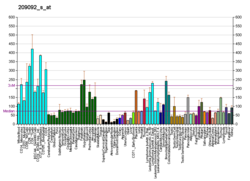| GLOD4 | |||||||||||||||||||||||||||||||||||||||||||||||||||
|---|---|---|---|---|---|---|---|---|---|---|---|---|---|---|---|---|---|---|---|---|---|---|---|---|---|---|---|---|---|---|---|---|---|---|---|---|---|---|---|---|---|---|---|---|---|---|---|---|---|---|---|
| |||||||||||||||||||||||||||||||||||||||||||||||||||
| Identifiers | |||||||||||||||||||||||||||||||||||||||||||||||||||
| Aliases | GLOD4, C17orf25, HC71, CGI-150, glyoxalase domain containing 4 | ||||||||||||||||||||||||||||||||||||||||||||||||||
| External IDs | MGI: 1914451; HomoloGene: 9376; GeneCards: GLOD4; OMA:GLOD4 - orthologs | ||||||||||||||||||||||||||||||||||||||||||||||||||
| |||||||||||||||||||||||||||||||||||||||||||||||||||
| |||||||||||||||||||||||||||||||||||||||||||||||||||
| |||||||||||||||||||||||||||||||||||||||||||||||||||
| |||||||||||||||||||||||||||||||||||||||||||||||||||
| |||||||||||||||||||||||||||||||||||||||||||||||||||
| Wikidata | |||||||||||||||||||||||||||||||||||||||||||||||||||
| |||||||||||||||||||||||||||||||||||||||||||||||||||
Glyoxalase domain-containing protein 4 is an enzyme that in humans is encoded by the GLOD4 gene.
References
- ^ GRCh38: Ensembl release 89: ENSG00000167699 – Ensembl, May 2017
- ^ GRCm38: Ensembl release 89: ENSMUSG00000017286 – Ensembl, May 2017
- "Human PubMed Reference:". National Center for Biotechnology Information, U.S. National Library of Medicine.
- "Mouse PubMed Reference:". National Center for Biotechnology Information, U.S. National Library of Medicine.
- Qin WX, Wan F, Sun FY, Zhang PP, Han LW, Huang Y, Jiang HQ, Zhao XT, He M, Ye Y, Cong WM, Wu MC, Zhang LS, Yang NW, Gu JR (Oct 2001). "Cloning and characterization of a novel gene (C17orf25) from the deletion region on chromosome 17p13.3 in hepatocelular carcinoma". Cell Res. 11 (3): 209–16. doi:10.1038/sj.cr.7290088. PMID 11642406.
- Guo JY, Xu J, Mao Q, Fu LL, Gu JR, De Zhu J (Jan 2003). "The promoter analysis of the human C17orf25 gene, a novel chromosome 17p13.3 gene". Cell Res. 12 (5–6): 339–52. doi:10.1038/sj.cr.7290136. PMID 12528892.
- "Entrez Gene: C17orf25 chromosome 17 open reading frame 25".
Further reading
- Gerhard DS, Wagner L, Feingold EA, et al. (2004). "The status, quality, and expansion of the NIH full-length cDNA project: the Mammalian Gene Collection (MGC)". Genome Res. 14 (10B): 2121–7. doi:10.1101/gr.2596504. PMC 528928. PMID 15489334.
- Ota T, Suzuki Y, Nishikawa T, et al. (2004). "Complete sequencing and characterization of 21,243 full-length human cDNAs". Nat. Genet. 36 (1): 40–5. doi:10.1038/ng1285. PMID 14702039.
- Zhang HT, Yan ZQ, Hu XB, et al. (2004). "Interaction of C17orf25 with ADP-ribose pyrophosphatase NUDT9 detected via yeast two-hybrid method". Sheng Wu Hua Xue Yu Sheng Wu Wu Li Xue Bao. 35 (8): 747–51. PMID 12897971.
- Cardoso C, Leventer RJ, Ward HL, et al. (2003). "Refinement of a 400-kb critical region allows genotypic differentiation between isolated lissencephaly, Miller-Dieker syndrome, and other phenotypes secondary to deletions of 17p13.3". Am. J. Hum. Genet. 72 (4): 918–30. doi:10.1086/374320. PMC 1180354. PMID 12621583.
- Strausberg RL, Feingold EA, Grouse LH, et al. (2003). "Generation and initial analysis of more than 15,000 full-length human and mouse cDNA sequences". Proc. Natl. Acad. Sci. U.S.A. 99 (26): 16899–903. Bibcode:2002PNAS...9916899M. doi:10.1073/pnas.242603899. PMC 139241. PMID 12477932.
- Lai CH, Chou CY, Ch'ang LY, et al. (2000). "Identification of novel human genes evolutionarily conserved in Caenorhabditis elegans by comparative proteomics". Genome Res. 10 (5): 703–13. doi:10.1101/gr.10.5.703. PMC 310876. PMID 10810093.
This article on a gene on human chromosome 17 is a stub. You can help Misplaced Pages by expanding it. |




